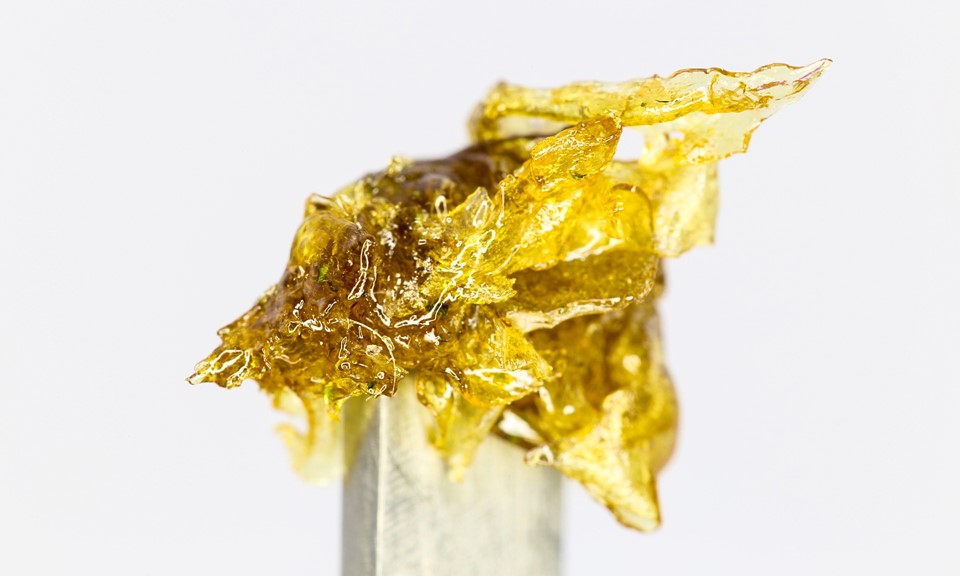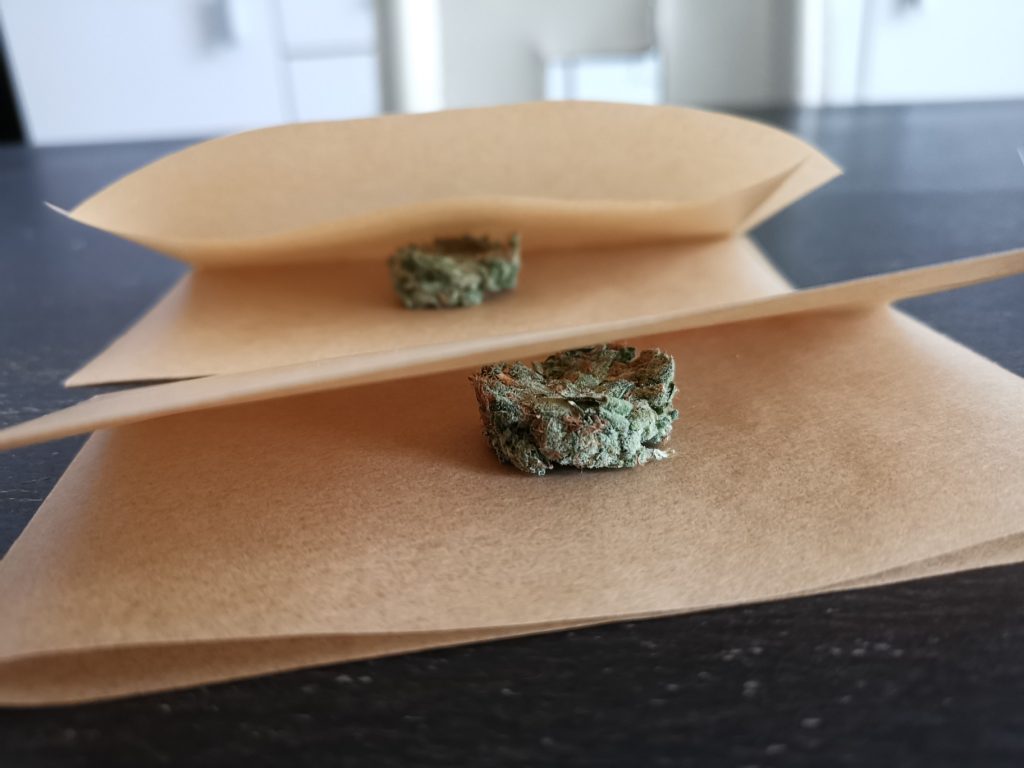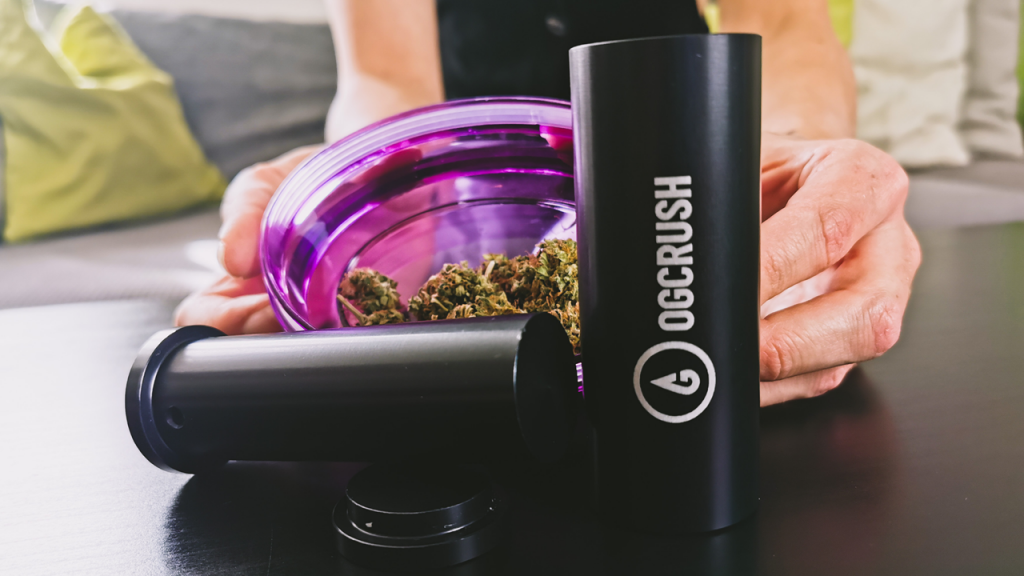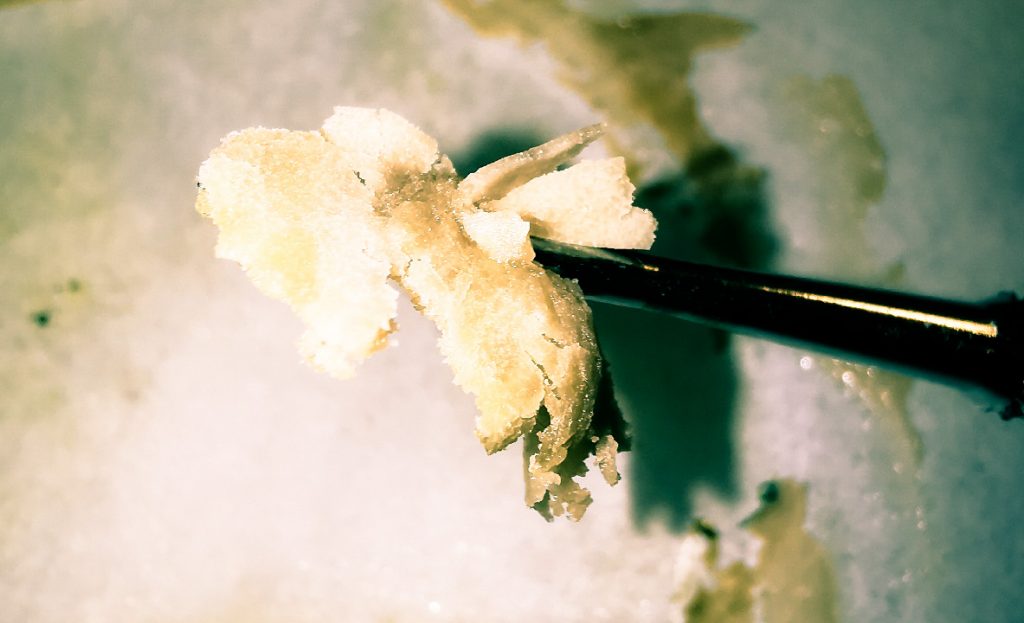Rosin can be considered as an absolute dream concentrate that meets all the criteria one could have as a cannabis connoisseur and enthusiast. You can make it super easy at home, it’s exceptionally potent and it also looks really great. Cannabis concentrates have enjoyed a worldwide increase in supporters and enthusiasts in recent years. In Germany, there are now more and more consumers in the cannabis scene, whose claim to the classic cannabis flowers has risen and are looking for high-quality and more potent alternatives. Of course we also tested how well the wax can be processed into e-liquid. Read more about it here.
Quality is King, Followed By Freshness
This sounds like a no-brainer but time and time again we talk to customers who are pressing flower and are getting poor to average results. Almost always it’s because they are squishing poor to average flowers, which is perfectly fine, but if you want stellar results, you need stellar material. This doesn’t mean that you have to go purchase “Platinum Gold Seal” off the shelf buds at your local dispensary or fill your entire garden just with Gorilla Glue #4, but with rosin, your results are mostly predetermined in the garden if your plates are up to par.
Quality is also closely related to freshness and you will often see your very best results when pressing flowers as soon after they are dried and cured as possible. The longer you wait, the darker it will be (oxidization), so make sure to squish buds when they’re as fresh as possible.
Similarly, we have not noticed perceptible differences between the flower rosin pressed from hydro, soil, coco grown flowers – the grow media plays a factor as far as the skill of the grower is one of the biggest determination with each particular grow medium. That being said, some strains and types of cannabis flowers do tend to yield better than others, namely indicas and hybrids anecdotally do better than wispy sativas.
Your heavy hitter, ultra-potent plants are usually going to be big yielders as the resin production is elevated with genetics such as Gorilla Glue, Ghost Train Haze, and many more. When it comes down to it, the biggest determination for yield, flavor, and quality is all based on how well the material was grown and how strong its genetics were in the first place.
Relative Humidity Makes or Breaks Yields
Another major factor that we determined after many flower rosin presses is that the humidity and moisture content of your buds will make a massive difference for your flower rosin yields. The reason for this is that if your cannabis is very dry, it will act like a sponge when the trichomes are liquefied, thus soaking up much of the rosin before it has a chance to escape. When you press your flowers, always make sure the relative humidity content of your material is at least 60% to 65% for optimal results.
You can quickly and easily check the moisture content of your flower by using either an analog hygrometer, such as the kind found in many cigar boxes.To increase the humidity levels of your buds, you can pick up pre-set humidity packs from Integra or Boveda; both companies sell packs that get your material to a perfect 55% (good for curing and joint smokers) 58% (good for joint smokers) or 62% (good for rosin pressers) moisture level. Moisture levels are a personal preference when it comes to joints..but when it comes to rosin pressing..there is ONLY one RH to use and that is 62%! Easy!
Choose a Temperature Based On Your Desired Results
Temperature is perhaps the most debated variable in the rosin pressing equation today, with fierce proponents on both sides of the spectrum (hotter vs. colder pressing). When you apply heat and pressure to your flower, the speed and consistency in which the trichomes liquefy depends greatly on what temperature is being used, as well as the evenness of that heat distribution. Generally, there are two accepted ranges within which to press virtually any type of rosin.
Choose The Correct Micron Bag
First and foremost, you can absolutely press flower rosin without a bag if you want, but you are liable to get little bits and pieces of plant material in your rosin on the other end. If you are pressing a rosin filter bag however, getting the right micron screen size is essential in order to strike a great yield-to-quality ratio. The rule of thumb is that you should never press flower rosin in anything less than 90 micron width. Below that, you can compromise your yield without getting noticeable gains in quality. Similarly, anything above 150 micron width tends to not filter that well, so reductions in quality may be realized. The relationship between micron type and material type is very important, because the higher the micron count, the more porous the mesh filter is.
- 90 Micron: best filtration and highest quality output for flower rosin, some reduction in yield
- 115 Micron: best overall micron filter type for flower rosin, a great sweet spot for yield and quality
Also, always make sure if you’re pressing in a bag to use 100% polyester monofilament filter mesh (nylon), which is the most conducive for yields while also being one of the FDA’s top recommended food grade fabrics. Stainless steel screens are prone to scratching plates and cutting yields, whereas silk screens stretch a significant amount, making it difficult to accurately track your pressure data.
Types
Due to different temperatures and different pressure, you get really very special and very own concentrates
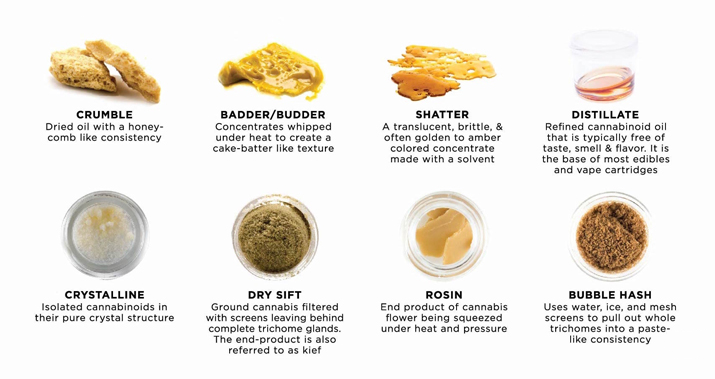
Here are a few clues
On the basis of these considerations, it becomes clear that there are many attitudes to delicious, terpene-rich concentrate – as long as one does not give too much or too little of everything.
Flowers (800-1000 PSI and 80-100 °C)
Efficient, with a high and pure yield in mind, flowers can be pressed well at pressures of 800-1000 PSI, and a temperature of 80-100 °C
Duration: Over a minute to three minutes.
Hash-Rosin (500 PSI and 60-80 °C)
Rosin pressed from hashish, feels most comfortable around the 500 PSI and 60-80 °C. Pre-melt for 10 minutes on the heat plates in double Rosin-Bag. Bubble Hash tends to be made with less pressure than Kief.
Duration: Longer than one minute recommended, longer duration at low temperatures.
My Settings
Here are my pressing settings for Flowers:
- Cold Pressing: 60°C – 85°C (140°F – 185°F), pressed for between 1:00 and 5:00 minutes or longer, which often produces a budder or batter consistency. Rich terpene preservation, but sometimes with a sacrifice in yield.
- Hot Pressing:86°C – 100°C (187°F – 212°F), pressed for between 0:45 seconds and 3:00 minutes, which frequently produces a very oily or shatter-like consistency.
- High terpene preservation if pressed at 90°C (194°F) or below, often accompanying an increase in yield over cold pressing.
In our opinion, we have found the most success around the 70°C – 95°C (158°F – 203°F) range which offers a great compromise between quality and yield. If terpene preservation and quality is your #1 goal, you should probably start colder and evaluate your results, however we have observed very little terpene loss in that range. Above 100°C (212°F) however there can be noticeable losses in flavor and terpenes. Try and see what works best for you, but heads up once you hit the higher temperatures. Pay attention.

